Stone foundation - dirt floor basement... insulation?
lil_geek
17 years ago
Featured Answer
Sort by:Oldest
Comments (15)
scryn
17 years agoRelated Discussions
Basement Insulation: What to do wen exterior is insulated?
Comments (5)Not that I know of. But my thought is that the external insulation is so minimal--BSC and Building America recommend a minimum of 2"XPS for high performance in a cold climate--that the wall might still be cool. Plus there's likely extensive thermal bridging at the top and wicking up of moisture through the walls (unless there is insulation under the wall or a thermal break). If it were my home, I'd add at least an inch of high-R foam on the interior as well. And don't forget the rim joist area, either with foam board well sealed, or easier and surer, spray foam. Spray-foaming the rim joist area is an essential step in creating a healthy energy-efficient basement. Here is a link that might be useful: High R Value Foundation Assemblies...See MoreSand stone foundation and basement wall
Comments (2)I do not know the difference between sand and brown and lime stones, It seems to be a mix in York county, PA... Most of the stuff (dust) between the stones has failed, but as the stones are placed well and so massive that nothing will happen(short of an earthquake)...90% of the stones are either protected or coated and painted(externally), so other than some internal appearence and dust(lots of), there is no problem. I have been filling the deep voids with Min-expanding "Great Stuff". In the future, I will use more masonary coating where necessary....See MorePlastic sheeting over basement dirt floor to combat moisture?
Comments (12)The intended purpose for laying down plastic is to retard the transmission of soil vapor (which is in almost all soils except in extremely arid areas, and inexorably rising due to changes in barometric pressure) from coming up into the basement space. The fact that you are using a dehu means that you have a perceptible soil vapor problem (at least that's why you are paying the electric co. to run the dehus, which is comparable to running an A/C, in some cases). Note however, that I said retard, not completely prevent the rising of soil vapor into the basement atmosphere. Nothing I know of will completely keep it out. Because we now have a goal of sealing up our houses in the name of energy savings (and have modern, and different, whole-house heating systems) rising soil vapor can get stuck within the building potentially causing damage to the structure or contents or residents, if mold develops. Of course your house, like mine, was built with long-tested systems that did not expect, or require, the house to be as hermetically sealed as we sometimes try for these days. In 1857 the vapor was a-rising just as it is today, but it was exiting the building much more easily. Two other factors: people lived and worked at home and were more likely to be aware of and able to adjust the basement openings during the day, promoting additional passive ventilation to remove the moisture. And they may have highly prized that very same moisture if they stored food in the basement. Of course they also didn't have nifty stuff like cross-linked plastic molecules made into cheap (if you don't take into account any off-stream environmental costs), easily laid-out rolls of plastic to put to use, either. Soil vapor is also coming from the basement's walls as your inspector noted. But blocking that moisture is as hard as, or harder, than blocking the soil vapor. If you had thoughts of converting your basement to modern uses (family room, media room, exercise parlor, etc.) you may be disappointed as this is rarely successful in old houses such as ours. So the remaining issue seems to be: how tight is the house above the basement, and how might that tightness be interfering with the house's natural ventilatory patterns. (I think of it as how the house is "breathing", albeit in a passive way.) And of course, it also depends how much more you may be planning to do, in the name of energy conservation, to further tighten up the house. You have run smack into one of the central dilemmas of old-house care: how do you integrate (without doing damage) modern building and energy standards with a structure that was designed and built to support a completely different system? Solving one problem can easily create a new, perhaps more difficult to manage, unforseen issue. There are many opinions and oxen-to-be-gored in this arena. As a practical matter, if you want to lay down plastic (though I recommend special-purpose materials intended for vapor retardation instead of construction poly) and can seal it well with tape where sheets are overlapped, and along the bottom of the walls, you can susbstantially reduce the amount of rising vapor within the basement cavity. But you should know there are some who posit that doing so will shift this moisture (perhaps with damaging consequences) to adjacent soil spaces, including under and in the immediate, exterior vicinity of your foundation walls. This (according to some) may super-saturate the soil, disturbing the necessary firmness and creating settling or susidence problems. Does it? I surely don't know, but it does create - over time - a very moist soil under the plastic. (You can test this by laying a yard-square scrap of plastic on the dirt floor and see what happens.) Others recommend various systems of forced, or air-pressure augmented passive ventilation to remove the moisture laden air from the basement before it can rise into house interior and replace it with (theoretically) drier exterior air. This method has the advantage of not monkeying around with existing soil mositure states, but it is complicated, and may take personal attention to adjust during each day and/or electricity to run. If you have just purchased this house, I think you should observe the ebb and flow for a while (at least a calendar year), as you think about this. And keep the issue in mind as you contemplate any further sealing and insulation projects. It sounds as though the dehus are keeping things in check, so nothing (except cost of power and fuss of removing condensate) is lost by taking a go-slow approach. And by all means, test for radon if you have it in your area. (Your local or state health department is a resource on this.) An upside of the necessary ventilation to control radon can be a reduction of basement moisture since the gas and at least some of the air vapor are removed at the same time....See MoreHow do you deal with damp, dirt-floor basements?
Comments (24)Alisande, we have a damp basement, too, and, like you said it's a pain to empty it. We have to empty it about twice a day in the wet season. As you might imagine, we're really tired of doing this! We wish we had a floor drain to have it empty into, but we don't since it's an old house. What we're going to try to do--and maybe you can do this, too--is figure out how to get the dehumidifier drain into the laundry sink. In our case, we need to rig some sort of hose for it and figure out a way to raise the dehumidifier to the proper height. But maybe you don't have a sink in your basement... :( Even so, a dehumidifier is worth having. We got ours at Lowes for about $120 and it has been money very well spent. Our basement smells clean and nice, and the items we store down there don't get damp like they did before we were running the dehumidifier. Of course, a dehumidifier can't solve all moisture problems. It definitely sounds like your gutters/etc were causing the problems. You might want to take a look at some books on basement moisture problems. Right now, I have two books out of the library on this subject that are really helping us figure out how to make some simple fixes without calling in the professionals. Home Water and Moisture Problems: Prevention and Solutions by Gary Branson (this one is so good that I'm planning on buying it for friends and family for Christmas!) 5 Steps to a Dry Basement or Crawl Space by Ronald K. Gay I sure hope some of this info is useful. I know how annoying it is to have a wet basement. Good luck!...See Moresharon_sd
17 years agokoszta_kid
17 years agolil_geek
17 years agoinfo_plastichalos_com
13 years agoworthy
13 years agoCarol_from_ny
13 years agojonnyp
13 years agoDavidR
13 years agorustfixer
13 years agomacv
13 years agoSkip1909
8 years agoSanford W.
8 years agolast modified: 8 years agoSkip1909
8 years ago
Related Stories
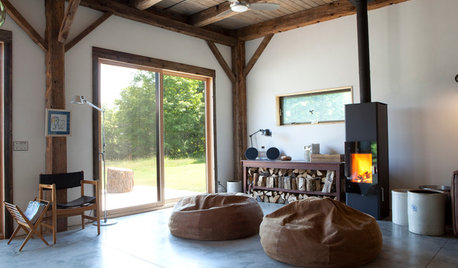
GREEN BUILDINGInsulation Basics: Heat, R-Value and the Building Envelope
Learn how heat moves through a home and the materials that can stop it, to make sure your insulation is as effective as you think
Full Story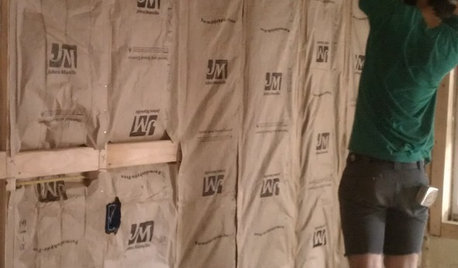
REMODELING GUIDESCool Your House (and Costs) With the Right Insulation
Insulation offers one of the best paybacks on your investment in your house. Here are some types to discuss with your contractor
Full Story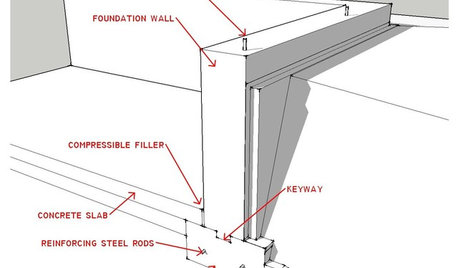
ARCHITECTUREKnow Your House: What Makes Up a Home's Foundation
Learn the components of a common foundation and their purpose to ensure a strong and stable house for years to come
Full Story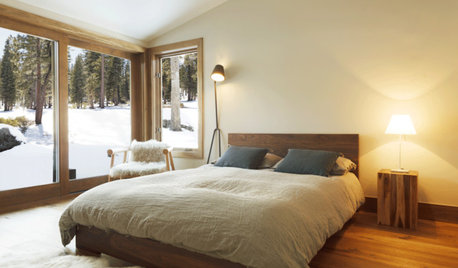
WINDOW TREATMENTSEasy Green: 9 Low-Cost Ways to Insulate Windows and Doors
Block drafts to boost both warmth and energy savings with these inexpensive but effective insulating strategies
Full Story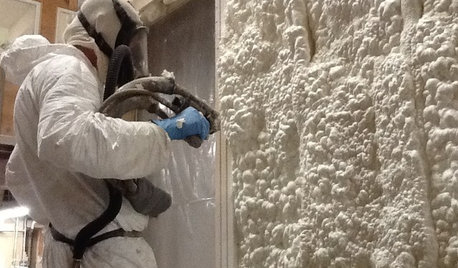
MATERIALSInsulation Basics: What to Know About Spray Foam
Learn what exactly spray foam is, the pros and cons of using it and why you shouldn’t mess around with installation
Full Story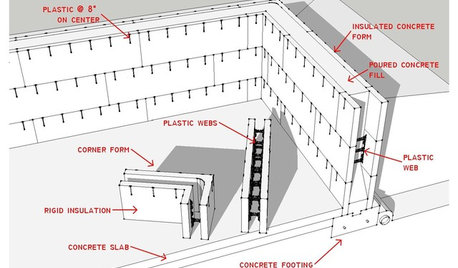
KNOW YOUR HOUSEKnow Your House: The Basics of Insulated Concrete Form Construction
Get peace and quiet inside and energy efficiency all around with this heavy-duty alternative to wood-frame construction
Full Story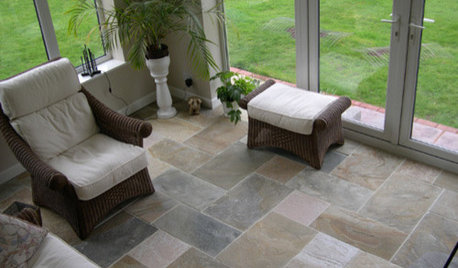
REMODELING GUIDESYour Floor: How to Find Right Stone Tile
Get the Pros and Cons of Slate, Travertine, Sandstone, Marble and Granite
Full Story
FLOORSAre Stone Floors Right for Your Home?
If you’re thinking about going with this hard-wearing material, here are important pros and cons to weigh
Full Story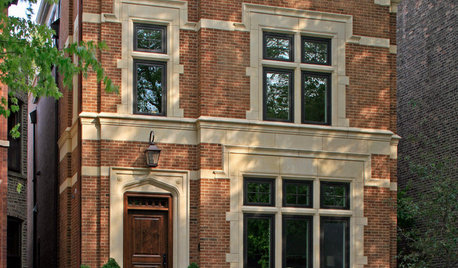
MATERIALSRaw Materials Revealed: Brick, Block and Stone Help Homes Last
Learn about durable masonry essentials for houses and landscapes, and why some weighty-looking pieces are lighter than they look
Full Story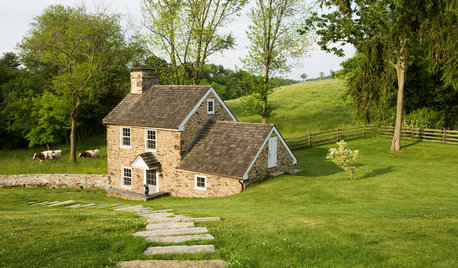
BEFORE AND AFTERSRestoration Rallies a 1790 Stone Springhouse
An old outbuilding gets a new purpose — several purposes, that is — thanks to careful efforts by stonemasons and architects
Full StorySponsored
Industry Leading Interior Designers & Decorators in Franklin County






housekeeping